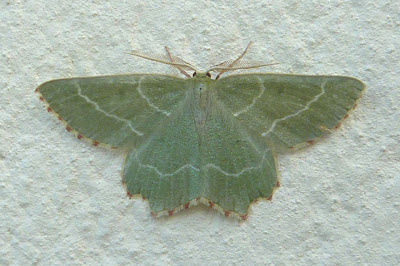Local moths for non-local people
Most lepidopterists that visit Dungeness have one specific target species in mind and that is Sussex Emerald. It is only known as a resident from here, although the odd wanderer is recorded nearby. The foodplant, Wild Carrot, is not an uncommon plant, so why the species cannot spread from this tiny foothold in England is, to me, a bit of a mystery. There are two local MV traps that will produce this moth in late June and July - the one at the bird observatory and the other in Dorothy Beck's garden. Between them they will record over 100 individuals in a good year. This year has been characterised by a late and small emergence. I saw four at the observatory and seven (including the individual pictured above) at Dorothy's.
One of my favourite moths at Dungeness is White Spot, whose larval foodplant is Nottingham Catchfly, which goes some way to explain why this species is local. The flight period was just coming to its end when I arrived at the very end of June.
There can be fewer more attractive pyralids than Cynaeda dentalis (above). It is another moth of local distribution and feeds on Viper's Bugloss, as does Ethmia bipunctella (below).
There are plenty more 'Dungeness specialities' to whet the moth hunter - a few more will follow in the next post...
One of my favourite moths at Dungeness is White Spot, whose larval foodplant is Nottingham Catchfly, which goes some way to explain why this species is local. The flight period was just coming to its end when I arrived at the very end of June.
There can be fewer more attractive pyralids than Cynaeda dentalis (above). It is another moth of local distribution and feeds on Viper's Bugloss, as does Ethmia bipunctella (below).
There are plenty more 'Dungeness specialities' to whet the moth hunter - a few more will follow in the next post...






Comments